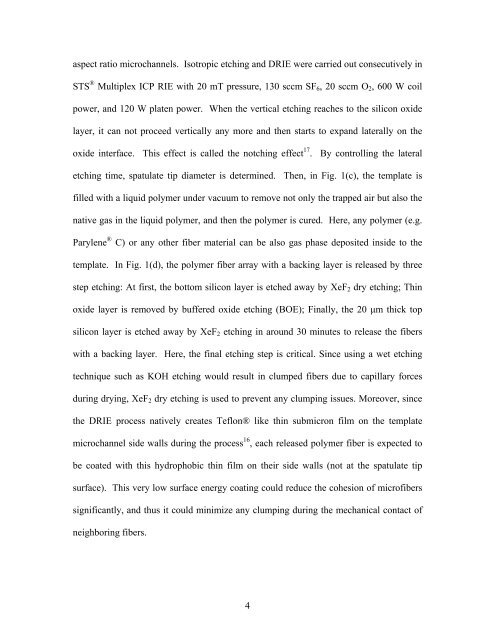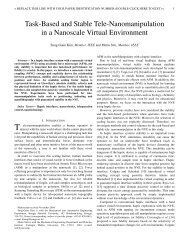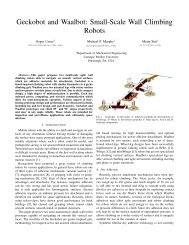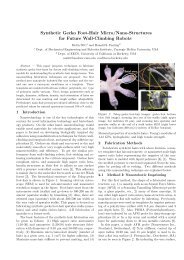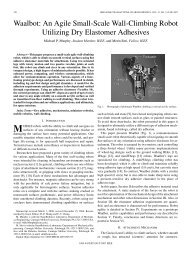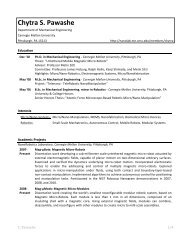View - NanoRobotics Lab - Carnegie Mellon University
View - NanoRobotics Lab - Carnegie Mellon University
View - NanoRobotics Lab - Carnegie Mellon University
Create successful ePaper yourself
Turn your PDF publications into a flip-book with our unique Google optimized e-Paper software.
aspect ratio microchannels. Isotropic etching and DRIE were carried out consecutively in<br />
STS ® Multiplex ICP RIE with 20 mT pressure, 130 sccm SF 6 , 20 sccm O 2 , 600 W coil<br />
power, and 120 W platen power. When the vertical etching reaches to the silicon oxide<br />
layer, it can not proceed vertically any more and then starts to expand laterally on the<br />
oxide interface. This effect is called the notching effect 17 . By controlling the lateral<br />
etching time, spatulate tip diameter is determined. Then, in Fig. 1(c), the template is<br />
filled with a liquid polymer under vacuum to remove not only the trapped air but also the<br />
native gas in the liquid polymer, and then the polymer is cured. Here, any polymer (e.g.<br />
Parylene ® C) or any other fiber material can be also gas phase deposited inside to the<br />
template. In Fig. 1(d), the polymer fiber array with a backing layer is released by three<br />
step etching: At first, the bottom silicon layer is etched away by XeF 2 dry etching; Thin<br />
oxide layer is removed by buffered oxide etching (BOE); Finally, the 20 μm thick top<br />
silicon layer is etched away by XeF 2 etching in around 30 minutes to release the fibers<br />
with a backing layer. Here, the final etching step is critical. Since using a wet etching<br />
technique such as KOH etching would result in clumped fibers due to capillary forces<br />
during drying, XeF 2 dry etching is used to prevent any clumping issues. Moreover, since<br />
the DRIE process natively creates Teflon® like thin submicron film on the template<br />
microchannel side walls during the process 16 , each released polymer fiber is expected to<br />
be coated with this hydrophobic thin film on their side walls (not at the spatulate tip<br />
surface). This very low surface energy coating could reduce the cohesion of microfibers<br />
significantly, and thus it could minimize any clumping during the mechanical contact of<br />
neighboring fibers.<br />
4


